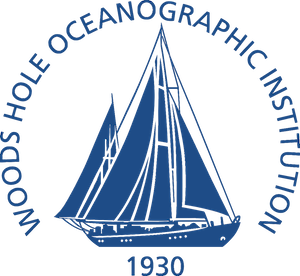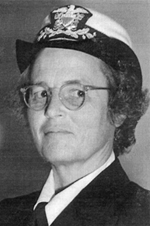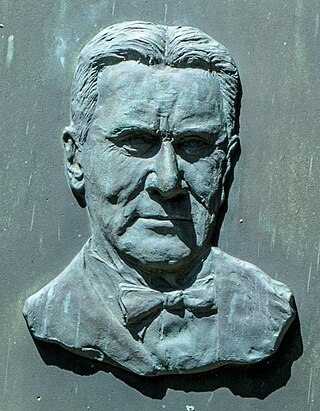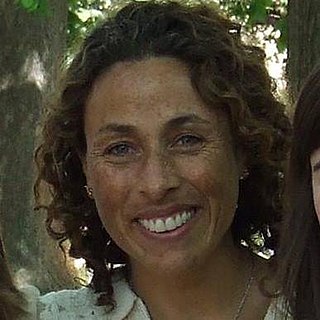Related Research Articles

The Woods Hole Oceanographic Institution is a private, nonprofit research and higher education facility dedicated to the study of marine science and engineering.

The Scripps Institution of Oceanography, located in San Diego, California, is one of the oldest and largest centers for ocean and Earth science research in the US. Originally founded in 1903, since becoming part of the University of California system in 1912, the institution has expanded its scope to include studies of the physics, chemistry, geology, biology, and climate of Earth.

Mary Sears was a Commander in the United States Naval Reserve and an oceanographer at the Woods Hole Oceanographic Institution (WHOI).

Alfred Clarence Redfield was an American oceanographer known for having discovered the Redfield ratio, which describes the ratio between nutrients in plankton and ocean water. He was a professor of physiology at Harvard University and one of the original staff of the Woods Hole Oceanographic Institution upon its founding in 1930.
Susan Henrichs became provost of the University of Alaska Fairbanks (UAF) in July 2007, after serving as dean of the Graduate School and vice provost of UAF from 2003 to 2007.
Farooq Azam is a researcher in the field of marine microbiology. He is a Distinguished Professor at the Scripps Institution of Oceanography, at the University of California San Diego. Farooq Azam grew up in Lahore and received his early education in Lahore. He attended University of Punjab, where he received his B.Sc. in chemistry. He later he received his M.Sc. from the same institution. He then went to Czechoslovakia for higher studies. He received his PhD in microbiology from the Czechoslovak Academy of Sciences. After he received his PhD, Farooq Azam moved to California. Azam was the lead author on the paper which coined the term microbial loop. This 1983 paper involved a synthesis between a number of leaders in the (then) young field of microbial ecology, specifically, Azam, Tom Fenchel, J Field, J Gray, L Meyer-Reil and Tron Frede Thingstad.
Edward David Goldberg was a marine chemist, known for his studies of pollution in the oceans.
Cindy Lee Van Dover is the Harvey Smith Professor of Biological Oceanography and chair of the Division of Marine Science and Conservation at Duke University. She is also the director of the Duke University Marine Laboratory. Her primary area of research is oceanography, but she also studies biodiversity, biogeochemistry, conservation biology, ecology, and marine science.
Cheryl A. Zimmer is a conservation biologist whose research interests are focused marine population ecology, specifically the role of hydrodynamics as a driving force in the evolution of marine life.
Alice Alldredge is an American oceanographer and marine biologist who studies marine snow, carbon cycling, microbes and plankton in the ecology of the ocean. She has conducted research in the open sea, at her laboratory at the University of California, Santa Barbara as well as in collaboration with the Long Term Ecological Research Network (LTER) at the Mo'orea Coral Reef Long Term Ecological Research Site in Mo'orea, French Polynesia. According to the annual ISI Web of Knowledge list published by Thomson Reuters, she has been one of the most cited scientific researchers since 2003.
Deborah K. Steinberg is an American Antarctic biological oceanographer who works on interdisciplinary oceanographic research programs. Steinberg's research focuses on the role that zooplankton play in marine food webs and the global carbon cycle, and how these small drifting animals are affected by changes in climate.

Nancy Helen Marcus was an American biologist and oceanographer. During her graduate studies, Marcus became known as an expert on copepod ecology and evolutionary biology. She began her career as a postdoctoral fellow at the Woods Hole Oceanographic Institution where she studied copepod dormancy and its implications for marine aquaculture. She continued her field research as a professor of oceanography and later as the director of the Florida State University Marine Laboratory (FSU). During this time Marcus was elected as a Fellow of the Association for Women in Science and the American Association for the Advancement of Science and served as the president of the Association for the Sciences of Limnology and Oceanography. As the president, she led efforts in increase education activities and to increase the endowment fund.
Lisa A. Levin is a Distinguished Professor of biological oceanography and marine ecology at the Scripps Institution of Oceanography. She holds the Elizabeth Hamman and Morgan Dene Oliver Chair in Marine Biodiversity and Conservation Science. She studies coastal and deep-sea ecosystems and is a Fellow of the American Association for the Advancement of Science.

Claudia Benitez-Nelson is a Latinx American oceanographer whose research focuses on marine geochemistry and biogeochemistry. A Carolina Distinguished Professor, she serves as the Senior Associate Dean for College Initiatives and Interdisciplinary Programs at the University of South Carolina’s College of Arts and Sciences.
Sybil P. Seitzinger is an oceanographer and climate scientist at the Pacific Institute for Climate Solutions. She is known for her research into climate change and elemental cycling, especially nitrogen biogeochemistry.
Adina Paytan is a research professor at the Institute of Marine Sciences at the University of California, Santa Cruz. known for research into biogeochemical cycling in the present and the past. She has over 270 scientific publications in journals such as Science, Nature, Proceedings of the National Academy of Sciences, and Geophysical Research Letters.
Bess Ward is an American oceanographer, biogeochemist, microbiologist, and William J. Sinclair Professor of Geosciences at Princeton University.
Angelicque E. White is an American oceanographer. She is an associate professor at the University of Hawaiʻi at Mānoa School of Ocean and Earth Science and Technology and director of the Hawaii Ocean Time-series (HOT) program.
Cindy Lee is a retired Distinguished Professor known for her research characterizing the compounds that comprise marine organic matter.
Ann Gargett is a Canadian oceanographer known for her research on measuring turbulence and its impact on biological processes in marine ecosystems.
References
- ↑ "Faculty Emeriti". oceansci.ucsc.edu. Retrieved 2021-05-08.
- ↑ "WHOI To Present Mary Sears Woman Pioneer in Oceanography Award to California Scientist March 28" . Retrieved 2021-05-10.
- ↑ Silver, Mary Wilcox (1975). "The habitat of Salpa fusiformis in the California Current as defined by indicator assemblages1". Limnology and Oceanography. 20 (2): 230–237. Bibcode:1975LimOc..20..230S. doi: 10.4319/lo.1975.20.2.0230 . ISSN 1939-5590.
- ↑ Silver, Mary (2015). "Marine Snow: A Brief Historical Sketch". Limnology and Oceanography Bulletin. 24 (1): 5–10. doi:10.1002/lob.10005. ISSN 1539-6088. S2CID 129493316.
- 1 2 3 4 Silver, Mary Wilcox (March 2005). "Mary Wilcox Silver: A woman pioneer in oceanography" (PDF). Oceanography. 18: 57–64. doi: 10.5670/oceanog.2005.72 .
- 1 2 Rudd, Alexis (February 3, 2014). "Marine Snow Days | Saltwater Science | Learn Science at Scitable". www.nature.com. Retrieved 2021-05-08.
- ↑ Silver, M. W.; Shanks, A. L.; Trent, J. D. (1978-07-28). "Marine Snow: Microplankton Habitat and Source of Small-Scale Patchiness in Pelagic Populations". Science. 201 (4353): 371–373. Bibcode:1978Sci...201..371W. doi:10.1126/science.201.4353.371. ISSN 0036-8075. PMID 17793735. S2CID 41352811.
- ↑ Trent, Jonathan D.; Shanks, Alan L.; Silver, Mary Wilcox (1978). "In situ and laboratory measurements on macroscopic aggregates in Monterey Bay, California 1". Limnology and Oceanography. 23 (4): 626–635. Bibcode:1978LimOc..23..626R. doi: 10.4319/lo.1978.23.4.0626 . ISSN 1939-5590.
- ↑ Rojo, Sara (2020-03-05). "Interview with Jonathan Trent". NASA. Retrieved 2021-05-10.
- ↑ "Microscopes Reveal Sea Hitchhikers". The New York Times. 1989-01-24. ISSN 0362-4331 . Retrieved 2021-05-07.
- ↑ "UC Santa Cruz scientists find toxic algae in open ocean". The Mercury News. 2010-11-13. Retrieved 2021-05-08.
- 1 2 3 Silver, Mary Wilcox (2006). "Protecting Ourselves from Shellfish Poisoning: Molecular probes deployed by California scientists are just the latest weapons in our species' long battle with harmful algae" . American Scientist. 94 (4): 316–325. doi:10.1511/2006.60.997. ISSN 0003-0996. JSTOR 27858800.
- ↑ Silver, Mary W.; Bargu, Sibel; Coale, Susan L.; Benitez-Nelson, Claudia R.; Garcia, Ana C.; Roberts, Kathryn J.; Sekula-Wood, Emily; Bruland, Kenneth W.; Coale, Kenneth H. (2010-11-30). "Toxic diatoms and domoic acid in natural and iron enriched waters of the oceanic Pacific". Proceedings of the National Academy of Sciences. 107 (48): 20762–20767. Bibcode:2010PNAS..10720762S. doi: 10.1073/pnas.1006968107 . ISSN 0027-8424. PMC 2996450 . PMID 21068374.
- ↑ "Iron stimulates blooms of toxin-producing algae in open ocean, study finds". Science Codex. 2010-11-08. Retrieved 2021-05-08.
- ↑ Bolam, Victoria (Fall 2008). "Unlocking the mysteries of the sea" (PDF). UC Santa Cruz Review.
- ↑ "Marine biologist Mary Silver honored by Woods Hole Oceanographic Institution". currents.ucsc.edu. March 25, 2002. Retrieved 2021-05-10.
- 1 2 "tos-fellows-meet | The Oceanography Society". tos.org. Retrieved 2021-05-11.
- ↑ "Award Recipients - Woods Hole Oceanographic Institution" . Retrieved 2021-05-06.
- ↑ "MBNMS: Ed Ricketts Memorial Lecture". montereybay.noaa.gov. Retrieved 2021-05-06.
- ↑ "Award Recipients - Woods Hole Oceanographic Institution" . Retrieved 2021-05-06.
- ↑ "WHOI To Present Mary Sears Woman Pioneer in Oceanography Award to California Scientist March 28" . Retrieved 2021-05-08.
- ↑ "Union Fellows | AGU". www.agu.org. Retrieved 2021-05-06.
- ↑ "Rachel Carson Lecture | AGU". www.agu.org. Retrieved 2021-05-06.
- ↑ "Support Ocean Sciences". oceansci.ucsc.edu. Retrieved 2021-05-08.